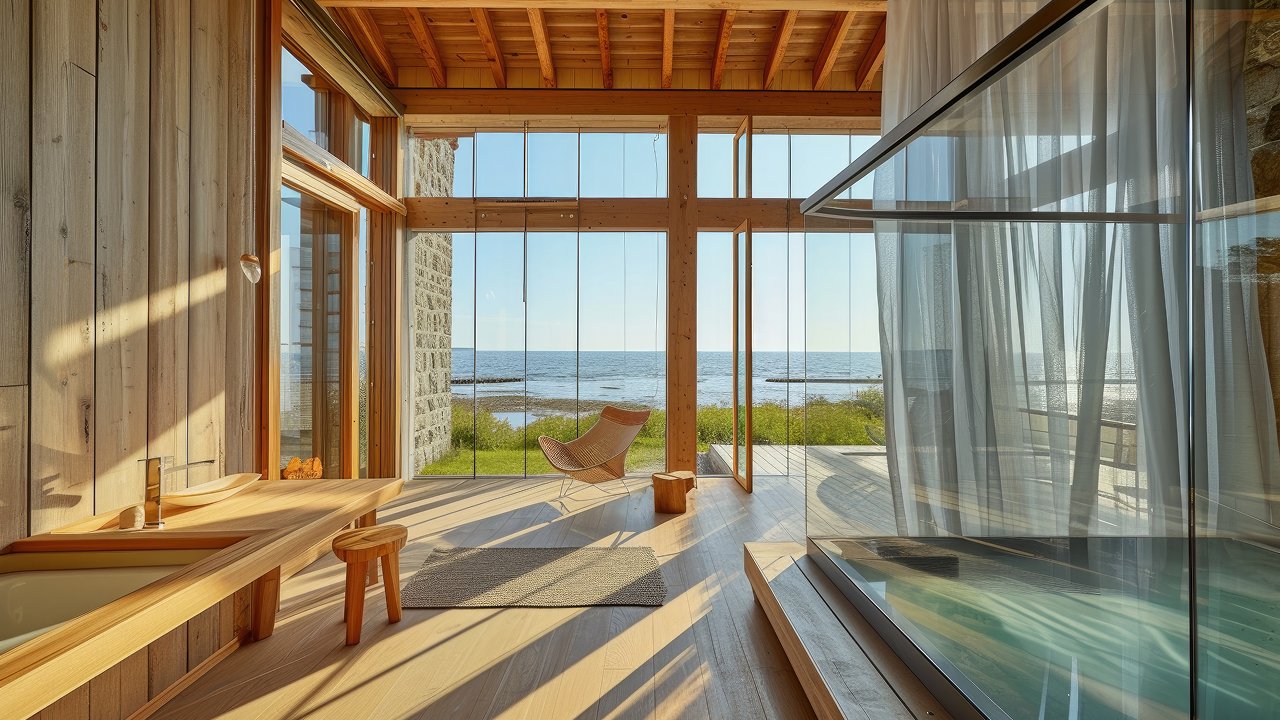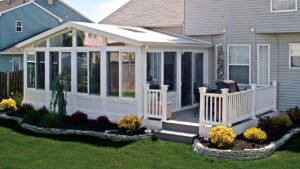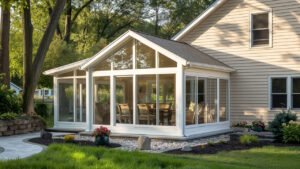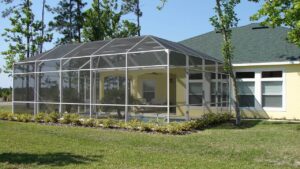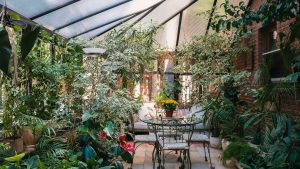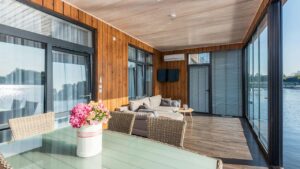The defining feature of any sunroom is its windows. They create the light-filled atmosphere that is a sunroom’s special respite from the outside world. Thanks to windows, which also play a critical role in maintaining temperature and energy consumption, , a sunroom window guide can help you choose the right options to balance beauty, comfort, and efficiency.
Windows Play Important Role in the Comfort and Beauty – or otherwise – of your Sunroom.
They keep you comfortable throughout all seasons of the climate. Whether your sunroom is for morning coffee, indoor gardening, or casual lounging, its appearance and functionality are largely occur by the types of windows you select.
The wrong window can cause an abundance of glare, an extreme temperature in summer or winter for your comfort. It’ll cause loss of light and energy because it’s hitting something else instead of coming through clear glass – instead of lighting up all around you!
However, with the right windows installed, a sunroom becomes its own little world, allowing beautiful sunshine to flow throughout the year. If you are exploring a sunroom installation guide, understanding window choices is the first and most important step.
Choose the Right Windows

The performance of a sunroom is largely determined by its windows. How much light they allow, the degree to which they insulate, and how that translates into necessary ventilation. Poorly insulated windows can flood the sunroom with light, heating the house and cost you enough before cooling down in winter.
Good design that is energy efficient can help stabilize indoor temperatures, minimize utility bills each month, and improve comfort, especially for 4-season sunrooms. Besides function, your choice of window affects the character and utility of the entire room.
If the sunroom is open and airy, or enclosed, this depends largely on the type of windows you have. If you’re considering a sunroom upgrade, replacing old or inefficient windows with new, energy-saving designs can instantly transform the space. A sunroom window guide can help you narrow down the right choices for your needs.
Types of Windows for Sunrooms
Windows in sunrooms generally fall into two categories: fixed and operable. Some of the most common kinds are:
- Sliding Windows are practical and space-saving. They slide horizontally on tracks and are simple to operate. This type of window is ideal for a sunroom where the views are more important than other things, such as air flow and heating/cooling convenience.
- Casement Windows open outward with a crank, providing the user with excellent ventilation and an airtight seal when closed up. They work well in more traditional or energy-conscious sunrooms.
- Double-hung Windows consists of two sashes that slide up and down. They have a classic style, as well as being able to control airflow from the top or bottom, or both.
- Awning Windows are hinged at the top and open outwards. They are useable for ventilation even when it is raining. They are a best combination with fix windows in layering systems to make the facade light and airy.
- Picture and Bay Windows are both permanent, or fixed (non-operable), and provide wide views of the outside. Bay windows add interest and depth.
The proper window will depend on how much ventilation you need in your sunroom, which way it faces, and whether the overall style feels correct to you and your dreams. For inspiration beyond windows, check out sunroom design ideas that complement natural lighting.
Window Frame Materials
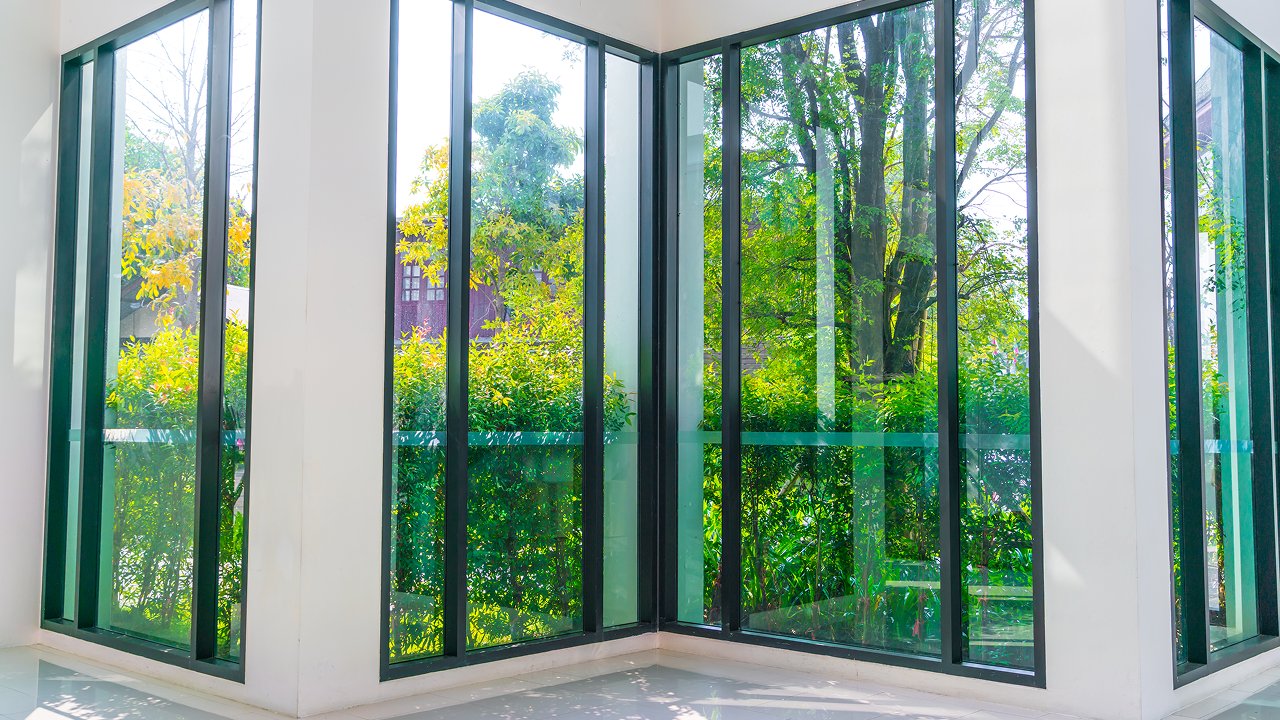
The frame material not only affects the durability and appearance of sunroom windows but also their insulation properties and maintenance needs. Common choices include:
- Vinyl frames require little maintenance, resist moisture, and provide acceptable thermal performance. They are inexpensive and fit many climates, but will somewhat expand during periods of extreme heat.
- Aluminum is durable, has a good strength-to-weight ratio, and, because of its width, is better for carrying larger pieces of glass in a confined space. However, without a thermal break, it is a poor insulator. It should primarily be used with a metal frame to construct a 3-season sunroom or screen room.
- Wood provides a warm traditional aesthetic, good insulating properties, and is adaptable for any sunroom to match classical architecture. However, it must also be sealed or painted regularly to prevent damage from humidity or UV rays.
- Fiberglass product frames may be one of your best durable and energy-efficient materials. Because they are frameless, your fiberglass product frames will not warp, expand, or contract with temperature changes. Therefore, they are non-conductive and fit for housing double-glazed systems for use in your sunroom year-round.
You Might Like to Read: Enclosed Patio Rooms
All materials come with unique sets of advantages and disadvantages with regard to maintenance and cost, longevity, and aesthetics. That is why it is important for the progress of your sunroom to depend on the climate of your sunroom, plus the extent of maintenance you intend to provide.
Glazing and Glass Options
Glass plays an important role in sunroom maintenance: energy, heating, and safety. The least expensive type of glass is single-pane glass, but it has poor insulation properties. But if you use double-paned or insulated glass units (IGUs), which have an air or gas space between the panes, the energy efficiency is better, and the noise level is lower.
Low-E coatings (low emissivity) are a microscopically thin film of metal to reflect infrared light and apply on the windowpane/wall. Low-E coatings will reflect heat away in summer, or keep heat in during winter months. Which will increase the comfort of people occupying the room while allowing natural lighting to pass through the space.
In terms of durability and safety, tempered glass (which will shatter into little pieces with non-sharp edges) and laminated glass (which will maintain its shape when broken) are preferred. They protect against extreme weather – especially in areas subject to strong winds or with any amount of impact.
A number of kits and custom windows also provide polycarbonate panels. An alternative to glass, these are lightweight, UV-resistant, and tough, but not as clear or long-lasting as top-quality glass.
Energy Efficiency Considerations
Not all windows are created equal when it comes to energy use; it’s up to the consumer to decide which ones make more efficient use of resources. The U-factor for your window is something that should most concern you. The lower the U-factor, the better a window will keep in heat.
For warmer climates, you will also want to consider the Solar Heat Gain Coefficient (SHGC). This tells how much radiation from the sun is allowed into your sunroom. Less SHGC means that a comfortable living space can be maintained during all seasons without undue burdens on HVAC systems. These details are critical for anyone referencing a sunroom window guide to plan for comfort and efficiency.
Double or triple-paned windows filled with argon or krypton gas are ideal for four-season sunrooms in places that have harsh winters as well as summers. They provide additional insulation, cut down on drafts, reduce condensation, and contribute to overall energy savings and occupant comfort.
Sunlight, UV, and Heat Control
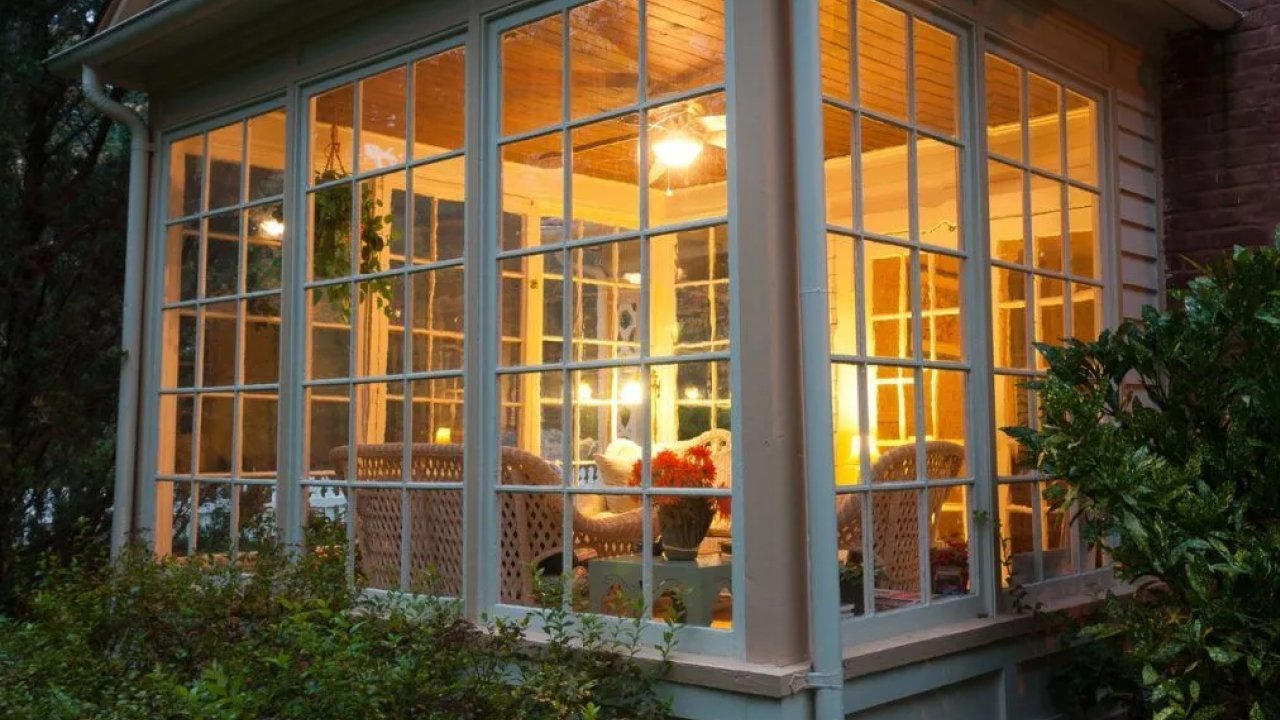
Sunrooms, as a rule, hold up to incredibly rigorous sunlight, making it all the more necessary to control UV content. The relentless sunshine can make furniture, carpet, and fine art fade into nothing. Many people today will opt to have Low-E coated windows or film placed to act as ultraviolet filters. These window films, which have little or no tint at all, will greatly reduce the harmful natural effects of ultraviolet rays on sites with excessive glare and heat sources.
Related Pick: Do-It-Yourself Sunroom
A second solar control option is to use tinted glass. This will tint the window lightly and would reflect some of the solar heat. It is especially a good use on south-facing or west-facing sunrooms, which can create an uncomfortable situation in afternoon sunshine. There are still options to help achieve some relief without sacrificing light levels by adding external shading systems. Such as a system of movable awnings or pergolas, provided you have the appropriate design and orientation in sunroom construction.
Solar performance is a priority in sunroom design. The designer can orient rooms so windows provide sun in the winter, but are designed to eliminate extreme heat in the summer. In other words, they may consistently make use of overhangs to eliminate high-angle sun exposure while utilizing low-angle sunlight in winter.
Ventilation and Operable Window Styles
Great ventilation can turn a sunroom that was once boring and stale into a whole new space, with lots of fresh air. If the sunroom is going to utilize heat from the sun, any operable window, such as a casement, slider, or awning style, is critical to get air to move. When windows are located adjacent to each other on two opposite walls, the outdoor air pours through, generating a cross-ventilation effect.
Related Pick: Sunroom Cost Guide
Fixed, or picture and bay style, windows are great for construction as they can be proportioned to maximize the view and allow some sunlight into the room. Since fixed windows are sealed to the house, they should be combined with operable units to allow air to move through. In humid climates, natural ventilation reduces the risk of condensation and keeps moisture levels in the space manageable.
Design Style and Aesthetics

Regarding the look of your sunroom, window style is a significant consideration. While windows with slim aluminum or fiberglass frames have a sleek, modern vibe, the various types of wood or vinyl with divided grids have classic or rustic styles.
Minimalist or Japanese-style sunrooms tend to have large, seamless panes and clean lines for a feel of calm and simplicity. Coastal or farmhouse sunrooms, however, often have many windows with lighter white frames to convey a wind-blown, bright feeling.
The choice of window influences the design too. Floor-to-ceiling creates an environment of spacious airiness, while transoms or clerestory windows enable light with minimal wall and privacy encroachment.
If you are worried about ownership privacy, especially in urban locations, you can use frosted glass, blinds, and decorative films that still let light in with no direct view of the interior.
FAQs
For all-season use, energy-efficient double-pane or triple-pane windows have Low-E coatings and argon gas fills. Casement or awning windows give the best sealing and insulation for operable units.
Yes, old sunroom windows are often replaceable with newer and more efficient models. Retrofitting can markedly improve insulation, reduce energy costs, and enhance aesthetics. Structural compatibility, however, is a crucial consideration.
Use insulated glass units (IGUs), ventilate with operable windows, and ensure that temperature differentials do not get too extreme together. During damp months, a dehumidifier will also help.
Conclusion
The sunroom windows constitute much more than just design choices: they are an essential part that determines how well that space will be. It defines how comfortable or efficient you’ll find living in it for years to come. Choosing frame materials, glazing, and ventilation measures defines how comfortable and efficient your sunroom will remain for years to come. A sunroom window guide ensures you weigh aesthetics, cost, and performance before making a final decision.
Whether you are adding a new sunroom or freshening up an old one, it is worth the effort to match your choice of windows with your climate, style, and how you plan to use the space. Choosing well can mean the difference between a beautiful but inconvenient room and one that is your favorite place in the house throughout the year.
You Might Like to Read: Sunroom Floor Design Ideas

